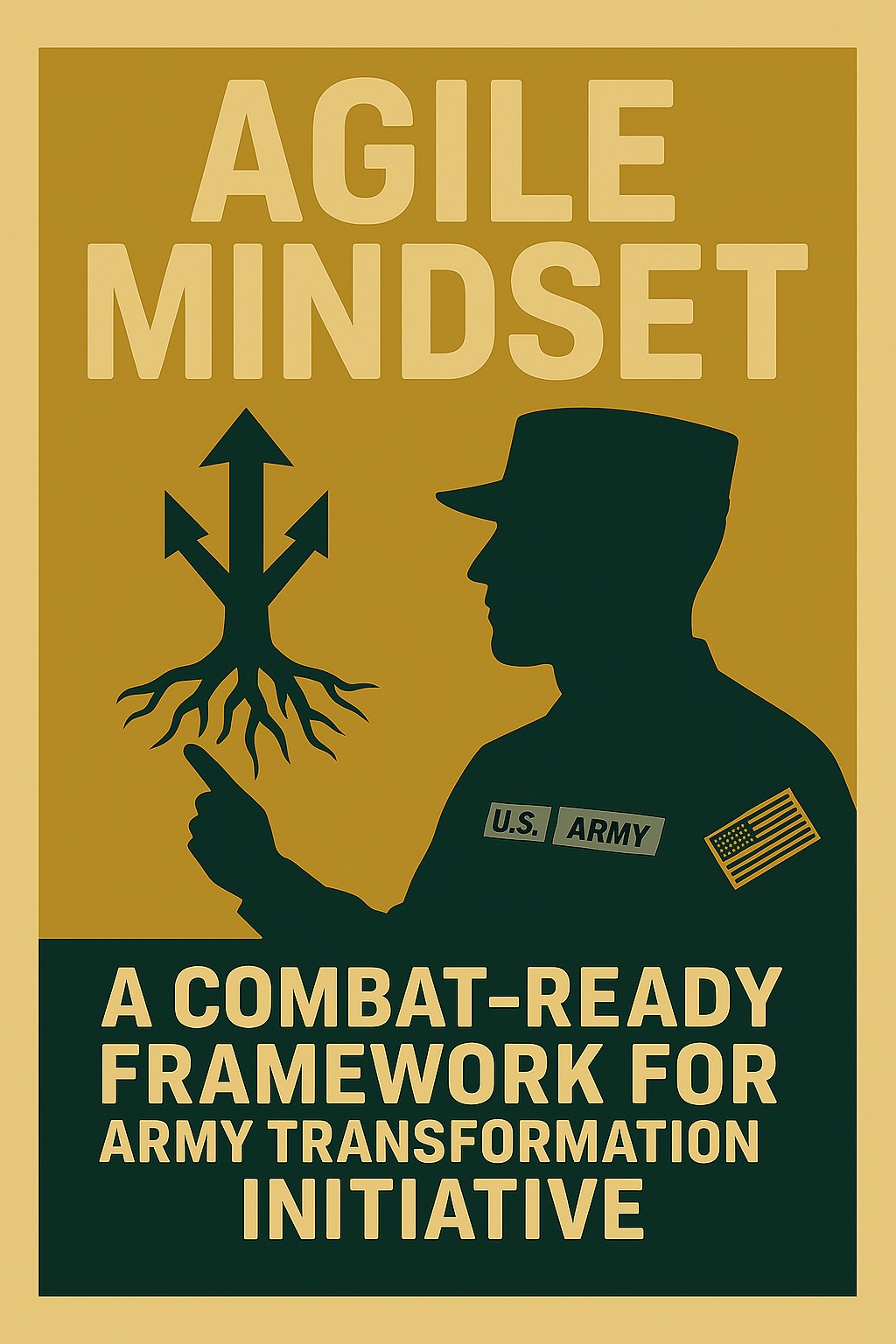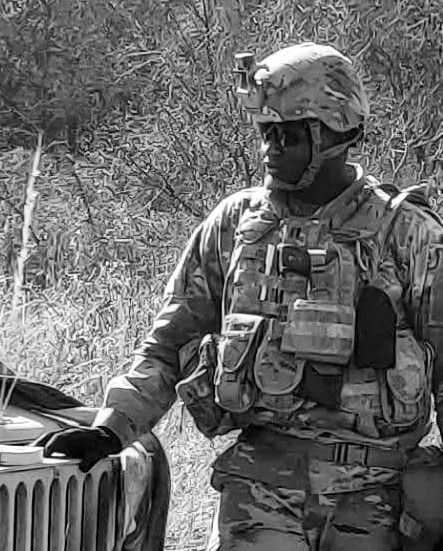Agile Mindset – A Combat-Ready Framework for the Army Transformation Initiative

Introduction
Modernization isn’t coming: It is here. Will today’s Soldiers be ready for tomorrow’s fight? As the Department of Defense (DoD) and U.S. Army transform rapidly Soldiers must adapt even faster physically, mentally and emotionally. To counter emerging threats and match rapid technological advances, the Army is accelerating its modernization efforts to stay ahead of near-peer adversaries. Yet with directives pouring in from higher headquarters at lightning speed, it can be difficult to discern their practical implications for service members at the brigade and below. This article clarifies the Army Transformation Initiative (ATI) and offers the Agile mindset as a practical approach to implementing these sweeping changes.
Understanding the Army Transformation Initiative
The ATI reflects the Secretary of the Army’s directive to operationalize the Secretary of Defense’s Army Transformation and Acquisition Reform guidance, issued in April 2025. The message from Army Secretary Daniel Driscoll and Chief of Staff Gen. Randy George is clear: transformation is mandatory. As battlefields grow more unpredictable and contested, adaptation is no longer optional. It is a matter of survival. Every individual, function, and formation must actively ensure the Army remains ready to fight and win, whatever the future battlefield brings.
Secretary of Defense Pete Hegseth summed it up: “Winning on the rapidly evolving battlefield requires Soldiers who are physically and mentally resilient, rigorously trained, and equipped with the best technology available.” He called for a shift toward capability-based acquisition, emphasizing rapid integration of new technologies and continuous skill development across the force.
The Problem: Ever-Changing Battlefield
After examining the Army Transformation Initiative (ATI), a few priorities become clear. The Army seeks Soldiers who can adapt to any situation and prevail in dynamic, unpredictable battlefields. ATI also envisions an acquisition process that equips troops for success in those environments, and an organizational structure designed to optimize their performance. The only certainty about future battlefields is their constant evolution. Meaning, the operational, sustainment, and technological requirements to win in the future will not be known in advance, necessitating the development of an adaptive and resilient Army capability.
The Solution: Agile Mindset and Methodology
Because future battlefield requirements are uncertain and constantly evolving, the Army must adopt a mindset rooted in adaptability: the Agile mindset. This way of thinking emphasizes change, collaboration, and continuous learning. Agile mindset is critical for operating in complex, ambiguous environments.
To illustrate how units can adopt an Agile mindset, leaders should empower platoon and squad leaders to make decisions traditionally reserved for brigade-level commanders. Agile thinking demands senior leaders trust and enable junior personnel, while junior leaders must be ready to act decisively, even beyond the parameters of their mission order. Empowering junior leaders to make traditionally senior-level decisions may create initial tension over operational freedom and trust. Yet this shared discomfort signals growth, not weakness.
Another approach to practice the Agile mindset is through collaboration. An Agile mindset requires different echelons to collaborate instead of using hierarchal processes. Meanwhile, the Army’s hierarchical structure can inhibit cross-functional teamwork, especially at lower levels. Enabling agility will require not just a shift in thinking, but training and structural adaptation to support it.
Lastly, continuous learning must become a doctrinal standard. The Army should implement formal Agile training and establish milestones to reinforce the methodology. For example, introducing Agile mindset courses during Sergeant Time Training (STT) would raise awareness among Soldiers and improve practical application. At higher levels, leaders’ professional development sessions can focus on Agile principles and real-world use.
This mindset isn’t new to the force. Many Soldiers already display discipline, initiative, and adaptability. However, organizational silos based on MOS, rank, or unit structure often limit its full expression. To thrive in uncertainty, the Army must nurture the Agile mindset. Fortunately, it doesn’t need to start from scratch. Units like the Multi-Domain Task Force (MDTF) and offices such as Army Rapid Capabilities and Critical Technologies Office (RCCTO) already model this approach.
Agile Mindset in Action: MDTF and RCCTO
RCCTO. For organizations and leaders looking to adopt the Agile mindset, the Army RCCTO offers a compelling case study. As a recently established entity, RCCTO applies Agile principles to rapidly develop and deliver cutting-edge capabilities that meet urgent operational needs. Examples include the Long-Range Hypersonic Weapon (LRHW), Mid-Range Capability (MRC), Directed Energy Maneuver-Short Range Air Defense (DE M-SHORAD), Counter-small Unmanned Aircraft Systems (C-sUAS and other emerging technologies. RCCTO’s ability to move fast, adapt continuously, and deliver results showcases the real-world impact of an Agile mindset. Lessons from RCCTO can and should be scaled across the Army.
MDTFs. Another organization that successfully employed the Agile mindset is the Multi-Domain Forces (MDTF). Recognizing current events across the world, the U.S. Army has set out to modernize its entire enterprise for Multi-Domain Operations (MDO)—competing with, and if necessary, defeating, highly capable adversaries who can challenge the United States in the land, sea, air, space and cyberspace.
From my firsthand experience working alongside MDTF Soldiers, I’ve seen that any Soldier can learn to think and act with agility. In just a few months, MDTF Soldiers trained on new Army capabilities and deployed them overseas in real-world missions. These formations demonstrate how Agile thinking can be taught quickly and effectively, offering a model for training the broader force on Agile mindset.
Agile Mindset in Action: Soldiers Level
At the individual, Soldiers can embody agility by applying the core principles of the Agile Mindset. The Soldier should: (1) prioritize individual interactions over processes and tools; (2) value working capabilities over exhaustive documentation; (3) maximize cross-unit collaboration instead of relying solely on their unit’s Standard Operating Procedures (SOPs and (4) prepared to adapt rather than strictly following preset plans. These four principles offer a practical, flexible framework for applying the Agile mindset in any operational context. Many Soldiers already demonstrate agility through initiative, adaptability, and mission-first focus. However, institutional barriers, such as rigid hierarchies or fixed processes, can stifle this potential. To thrive amid uncertainty, both Soldiers and leaders must embrace agility as a core competency.
Agile mindset begins with relationships. Soldiers who prioritize meaningful interactions over rigid processes or tools are often more effective under pressure. Whether it’s a quiet nod of trust and support between teammates or a rapid backbrief during chaos, human connection becomes the bedrock of mental resilience and effective decision-making under arduous, dynamic operational conditions.
Then comes execution. Instead of getting buried in exhaustive documentation, Agile Soldiers focus on delivering what works. They ask, “What will move the mission forward today?” rather than, “Is the binder updated?”. Critically, the Soldier must then analyze the process in place to identify administrative requirements—forms, reports, briefings—and tasks which are redundant, unnecessary, and do not effectively translate to combat capability. The Soldier must communicate this to their superior and be prepared to demonstrate how their recommendations still achieve the same effect (Commander’s Intent, redundancy, etc.) in a more efficient and effective manner. Ultimately, Soldiers must continuously identify and prioritize delivering what is most needed and what works.
Agility also means reaching across boundaries. While SOPs have their place, the most adaptable Soldiers collaborate across units and specialties. A radio operator exchanging tactics with a drone technician, or an infantry squad coordinating directly with cyber elements, these cross-functional bonds become force multipliers. For example, consider how junior infantry officers and SNCOs deployed to Afghanistan, Iraq, and elsewhere during the opening years of the global war on terror (GWOT) used the Small Wars Journal to disseminate trends, tactics and lessons learned at the operational level, thereby improving combat proficiency across the international Joint Force, while senior political and military officers quibbled about using the term “insurgency”.
And above all, agility is a mindset of adaptability. When plans fracture under real-world pressure, agile Soldiers don’t freeze, they shift. They assess, adapt, and act. That instinct to adapt, rather than cling to a failing plan, is what separates success from failure, and an Agile mindset from a rigid one.
Conclusion
The Army’s intent is clear: be ready for anything. That means transforming not just what we fight with but how we think. The Agile mindset provides a blueprint for navigating complexity and ambiguity. It reinforces mission command, fuels innovation, and cultivates the adaptability Soldiers need to outpace uncertainty.
RCCTO and MDTF have already proven the power of Agile thinking in action. Now is the moment to scale that success by embedding Agile principles across every echelon. The Army doesn’t just need new technology. It needs a new mindset. One forged in adaptability, grounded in grit, and prepared to thrive in chaos. That mindset is the Agile mindset and it starts with today’s Soldier.






